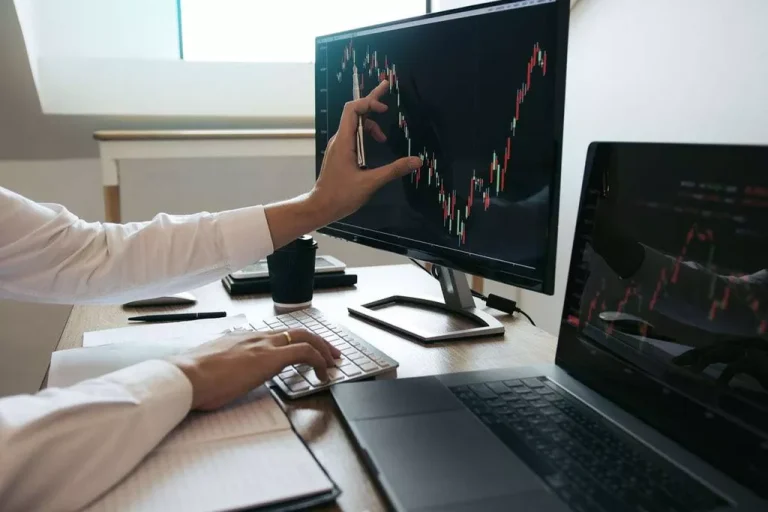Content
Choosing B-Book forex brokers offers distinct advantages, appealing to many traders. This control allows for competitive pricing and effective management of trade flows. They act as dealing desk brokers, streamlining the execution process. The B-Book is a trading a-book brokers execution method where brokers act as the counterparty to their clients’ trades. In this model, brokers do not forward clients’ orders directly to external liquidity providers or the market; instead, they internally match client orders and take the opposite position. This means that when a client buys a particular financial instrument, the broker sells it, and vice versa.

Ways Social Trading on cTrader Boosts Trading Volumes
Besides, it’s interesting that many A-Book brokers raise the limit of minimum deposit up to $5,000-$10,000. The reason for it is the regularity that the larger is an initial deposit, the more adequate is a trader. At that, the broker earns on fees for every transaction or spread markups. It’s not https://www.xcritical.com/ just that a Forex broker doesn’t want to operate on a fair business model. The fact is that there are circumstances that made it select such a model.
- Fixed spreads remain constant regardless of market fluctuations, offering predictability for traders who prefer to know their trading costs upfront.
- On the other hand, B-Book brokers frequently provide fixed spreads and faster trade execution, which might be helpful in specific financial markets.
- This makes the model attractive to brokers looking for increased profitability.
- Their primary approaches to handling client orders are A-book, B-book, and hybrid models.
- Their earnings come from a slight markup on spreads and commissions.
- A-Book brokers generate income primarily through commissions charged on each trade executed by their clients.
The Role of Liquidity Providers
What the broker did is essentially “copy” Elsa’s trade with somebody else. If Stablecoin a large client places a large order within the system, the broker will have to either act as a counterparty or allow slippage. Both variants are the features of a kitchen, which do not promise anything good to a trader. Compared with the volumes of interbank transactions, the internal volumes on the broker’s platform are too small. That is, the A-Book broker can’t compete with the B-Book one in terms of costs.

Starting Your Forex Trading Journey
Quick response times and knowledgeable representatives have contributed to positive experiences among clients seeking assistance. Exness distinguishes itself with an array of support and educational resources designed to enhance client experiences. Their website features a wealth of informative content, including articles, webinars, and tutorials aimed at improving traders’ skills and knowledge.
Obviously, in this case, the broker does not want to share his profits with anyone and will try to complicate the work of the trader, who trades on the plus side by various manipulations, minimizing his chances to earn. A-Book forex brokers are known for their transparency and shared interests with traders. The primary downside concerns the elevated operational expenses. These expenses stem from partnerships with liquidity providers, covering licensing fees, ongoing technical support, and necessary trade execution infrastructure. A-Book brokers send all client orders straight to forex liquidity providers, who then move them to the interbank market. In contrast, B-Book brokers keep trades within the company, acting as the counterparty.
Because the broker had transferred the market risk to the LP, it avoided a loss when Elsa’s trade won. In this trade, the broker ended up with a profit of 100 pips, which means its counterparty, the LP, ended up with a loss of 100 pips. Remember — every scam broker is a Market Maker but not every Market Maker is a scam. This is one reason to be cautious when deciding to start trading with a dealing desk (DD) broker.
Understanding the A-Book and B-Book models equips you with the knowledge necessary to select a forex broker that best suits your trading objectives. According to the broker’s risk management policy, this amount of market exposure exceeds the broker’s risk limit so it needs to offload the risk. When your broker receives an order from you (the customer), the broker will enter into a separate trade with a liquidity provider in the same direction as you. When a broker takes the opposite of a customer’s trade and transfers the market risk, this is known as “A-Book execution”. This might be a bank, non-bank electronic market maker, hedge fund, or even another forex broker.
They benefit from both A-Book’s commissions and spreads and B-Book’s profits from client losses. These models process client trades and conduct business differently. A-Book brokers usually submit client orders directly to liquidity providers to ensure transparency and possibly improved trading conditions for traders. However, because commissions and spreads are included in this arrangement, clients might pay higher prices. Unlike A-Book brokers, who route trades to external liquidity providers, B-Book brokers process orders in-house. This means that traders’ orders remain within the broker’s trading platform and do not reach the external interbank market or liquidity pools.
The way the broker can make money here is by charging Elsa a commission. Understanding how a broker generates revenue helps you understand their incentives. And focusing on the incentives will help you assess whether their interests align with yours. I`ll skip the pros and cons of scam brokers for obvious reasons.
All these are costs that the A-Book broker compensates at the expense of high mark-up to the spread. Whichever model you work with, be it A-book or B-book broker, each has its advantages and disadvantages both for the broker and the traders. If the client makes money, the broker loses it, and vice versa. Brokers working on the A-book model are less risky but also potentially less profitable because they earn only on margin and commissions. This model is recommended for novice brokers who are just gaining experience in the Forex industry. Additionally, A-Book brokers typically encounter lower profit margins than their B-Book counterparts, albeit steadier ones.
Elsa ended up with a profit of 98 pips, which means her counterparty, the broker, ended up with an equivalent loss. To state the obvious — It’s vital that you know what kind of broker you’ll be trading with. Simply because in order to start making money from Forex you have to trade with a good broker that suits your trading style and you don’t want to have to worry about your funds’ safety. I think the swap rates could definitely use improvement, but that aside, the spreads and execution are spot on by and large, and the customer service is top notch.
C-book is a term that is often used to refer to a risk management technique that differs from A or B-booking. The most common form of C-book risk management is the partial covering of a client order. Brokers can hedge the risk partially to mitigate the possible impact, but not eliminate it completely, choosing instead to manage the residual risk in the hope to profit from market movements. Have you ever stumbled upon the terms “A-Book” and “B-Book” while exploring the world of forex trading? Maybe you’re wondering what these models even mean, or how they might impact your choice of a brokerage firm.
DMA is similar to STP, where traders’ orders are distributed among liquidity providers. Conversely, in the STP model, the trader has to match the offer of a particular liquidity provider (only the one with which the broker has an agreement). The matter is that to bring client orders to the external market, brokers need to make contracts with a liquidity provider (and, as a rule, not just one), obtain licenses, provide technological support.
